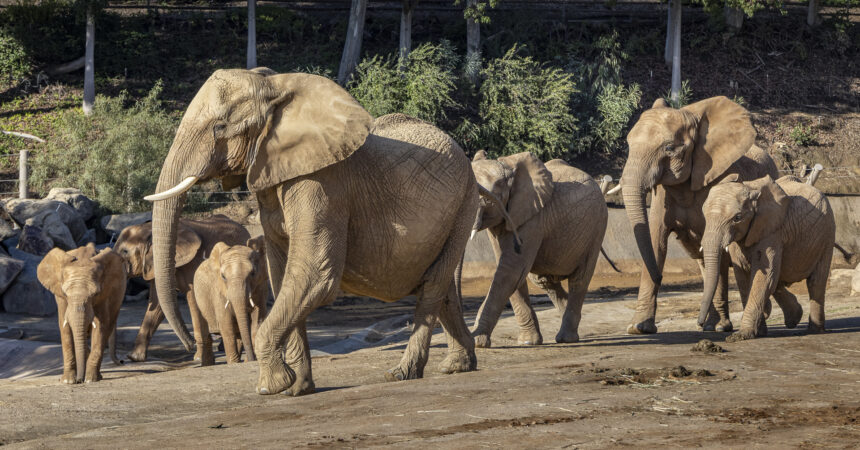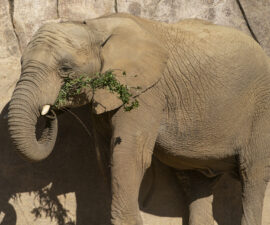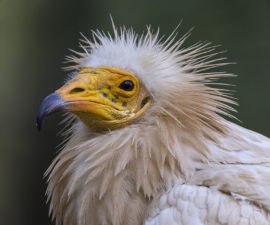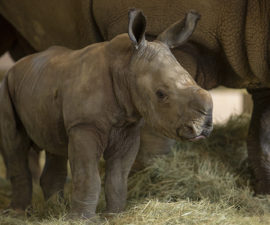As highly intelligent, deeply social individuals, elephants depend on their relationships with one another in order to thrive. Relationships can lead to greater access to food, water, and other basic needs like shade, plus access to generational wisdom and experiences needed to learn new skills. For elephants, going through life side by side as a family is not merely a matter of companionship or enjoyment, but of survival. In other words, family is not just the main thing—it’s everything.
As with our families, maintaining strong relationships with other elephants depends on a variety of dynamic factors: individual character traits, past experiences, recent events, environmental changes, group cohesion, and more. The nuances of elephant relationships have many layers and dimensions, to say the least, and the herd we have the honor of caring for at the San Diego Zoo Safari Park is no exception.
A Special Family
Swazi, the matriarch of the herd, established herself as the dominant leader early on despite not being the largest in the group. “She was a small package and a big personality right from the get-go,” says Mindy Albright, Manager of Wildlife Care and Behavior. “She doesn’t have to back up her words very often and it’s interesting to see the others respect that.”
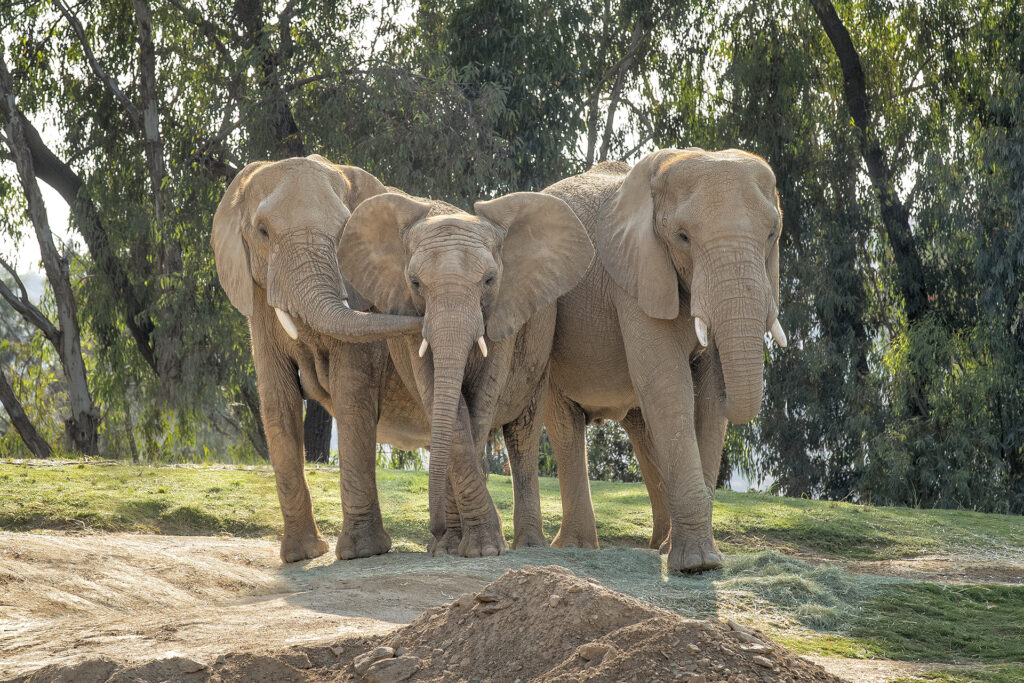
Next in the social hierarchy is N’dula, another adult female who indirectly challenges Swazi from time to time to see if she can gain influence and responsibility. Those dynamics trickle down to the others, especially the teenagers Khosi, Kami, and Qinisa. By choosing whether to align themselves with Swazi, or with N’dula, they make strategic choices that may lead those elephants sharing more (or less) access to resources like specific kinds of tree branches or preferred sleeping spots.
The presence of another adult in the herd has the potential to shape family dynamics in a big way. Musi is the adult male in the group who may eventually breed with some of the females. For now, he’s building relationships with Kami and Khosi, and laying a foundation of trust with the rest of the herd. In the future, Musi will likely mentor Zuli, his younger brother, who’s still a nursing calf. “It will be really fun to see him with his brother eventually because those boys just love to spar,” says Wildlife Care Supervisor Lauren Coates. When Musi was growing up, the older male elephants would get down on all fours to roughhouse and play with him in a way that only males do. “I’m really excited to see if he does that same thing for Zuli,” says Lauren.
For elephants with less influence over the group, like Umngani, creativity and flexibility make up for a lack of social status. Umngani eagerly seizes any chance she has to gain new skills, including learning from wildlife care specialists. Instead of competing with females of higher social status, Umngani applies other strategies like befriending laid-back males who will share with her.
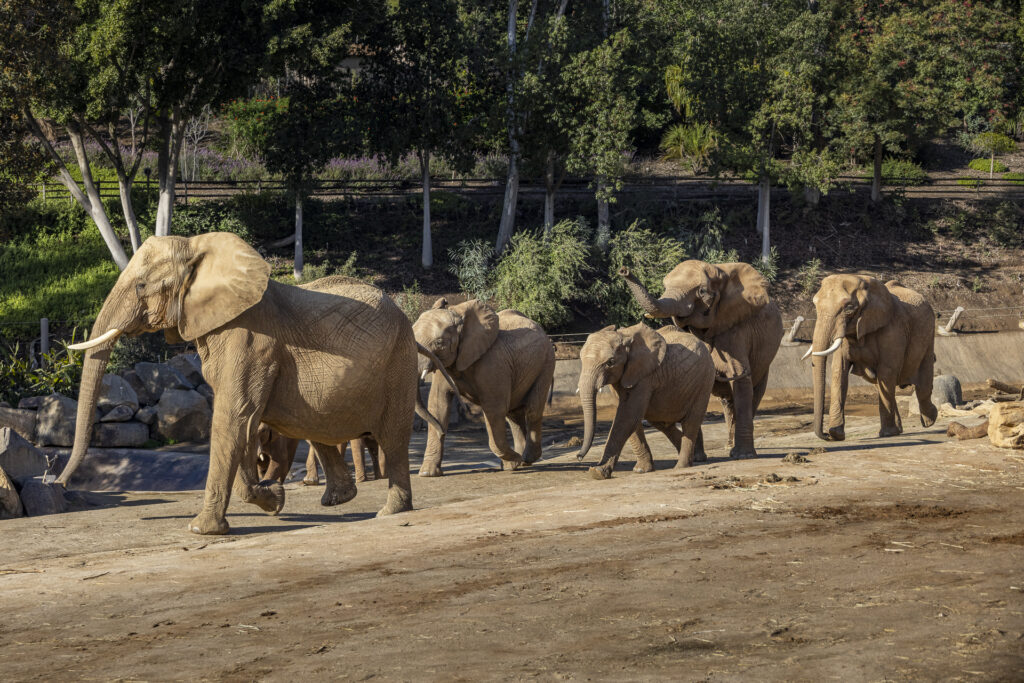
Ever-Changing Dynamics
When the herd welcomes new calves, like when Mkhaya and Zuli were born in 2018, social dynamics shift along with changes in responsibilities. “Those babies, when they come around, are just such a breath of fresh air into the herd. Everyone wants to be involved,” says Lauren. After Zuli was born, the whole herd began trumpeting, doing “alert circles” and rushed to touch him right away. “They all tried to nurse him, which was pretty sweet to see.” By helping to care for an influential mother’s calf, an elephant can earn the respect and appreciation of others—and more social status.
One member of the herd seems to understand this more acutely than the rest. Since she was a young calf, Khosi has made an effort to get along with everyone. As an infant, she co-nursed from her mother and another elephant, choosing to form a close bond with another adult to gain more trust and access. As she grew older, Khosi continued to invest time in relationships with even more elephants to build alliances. “It’s yielded dividends for her as an adult,” says Mindy. Just like some people have higher levels of social intelligence and greater social skills than others, the same seems to ring true for elephants.
In caring for the overall wellbeing of each individual, our wildlife care team considers social interactions a major component. Knowing their individual characteristics and preferences helps care specialists to key into factors at play within the herd, but to truly know and understand their family dynamics, it takes a keen eye to decode subtle, often silent, shifts.
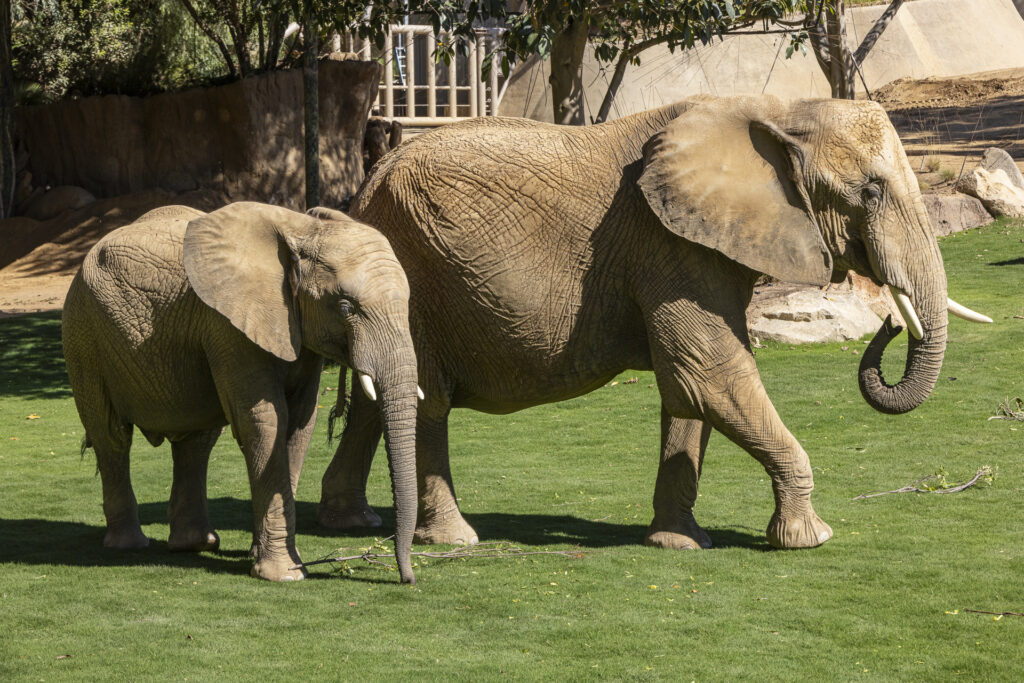
Subtle Shifts
While we can hear elephants trumpet and rumble, much of their auditory communication occurs at a frequency that people can’t hear. Fortunately, we can learn a great deal by decoding their body language. For instance, submission might look like Umngani relaxing while turning away from Swazi. If N’dula eats while facing Kami it could signal that she’s purposely keeping an eye on her. Seeing Musi’s ears perked out could mean that he’s alert and listening intently to something. Or, if Khosi stands next to Umngani (but not facing toward or away from her) it may mean that she’s not really interested in what’s going on. Each of those signals offer us telling information about the ebb and flow of the herd’s relationships.
Our team of experts look for these types of social clues around the clock. After observing their behavior during the day, care specialists continue to analyze the choices that the herd makes overnight through live video. Details like where each elephant chooses to sleep, who they’re in close proximity to, and how they interact while eating overnight can offer helpful insights into their changing needs. By tuning into the subtle shifts that take place in their relationships, wildlife care specialists can offer choices to individuals and groups that offer them the time, space, and group cohesion that they want and need.
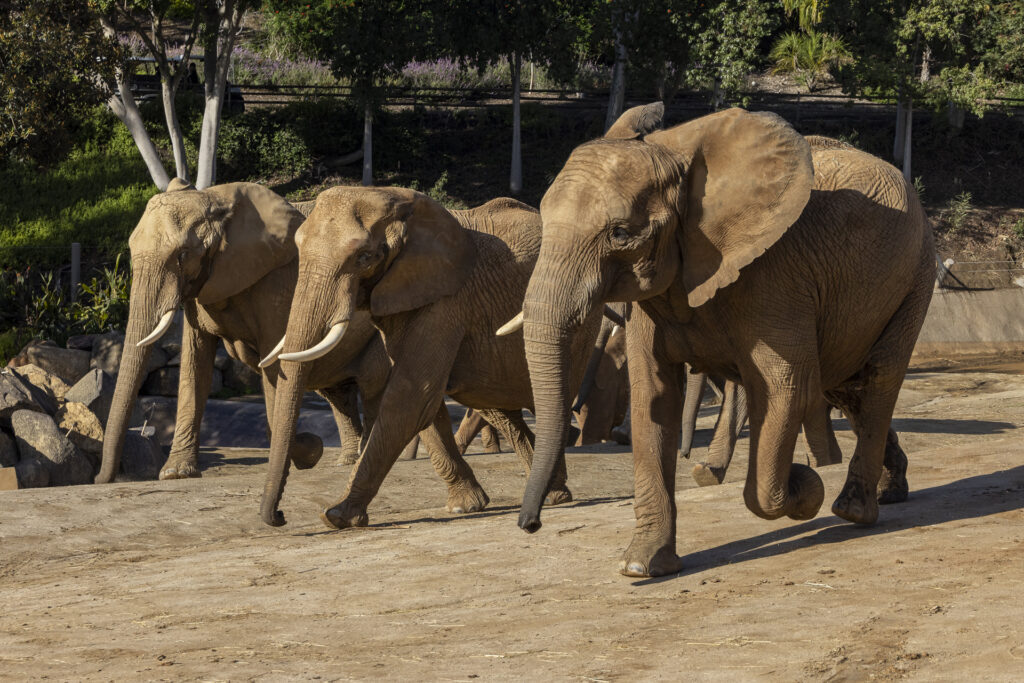
The Best is Yet to Come
With the reimagination of Elephant Valley now underway, we know the best is yet to come in this remarkable herd’s journey. Each thoughtfully designed element of the all-new Denny Sanford Elephant Valley will connect guests and elephants like never before, allowing guests to walk alongside Swazi, Musi, N’dula, and the rest of the herd.
The reimagined habitat will also offer new opportunities for the herd to grow socially. New methods for offering foraging experiences will create opportunities for elephants to find and eat a variety of food during the day and throughout the night. This could look like tree branches lowering into reach at random intervals, or the location of drinking water changing throughout the week. “They might have to work together to figure out where the food’s coming next, or where the water is coming next,” says Lauren. These scenarios mirror those that elephants naturally face in African Savannas, where sources of water and food change daily and seasonally.
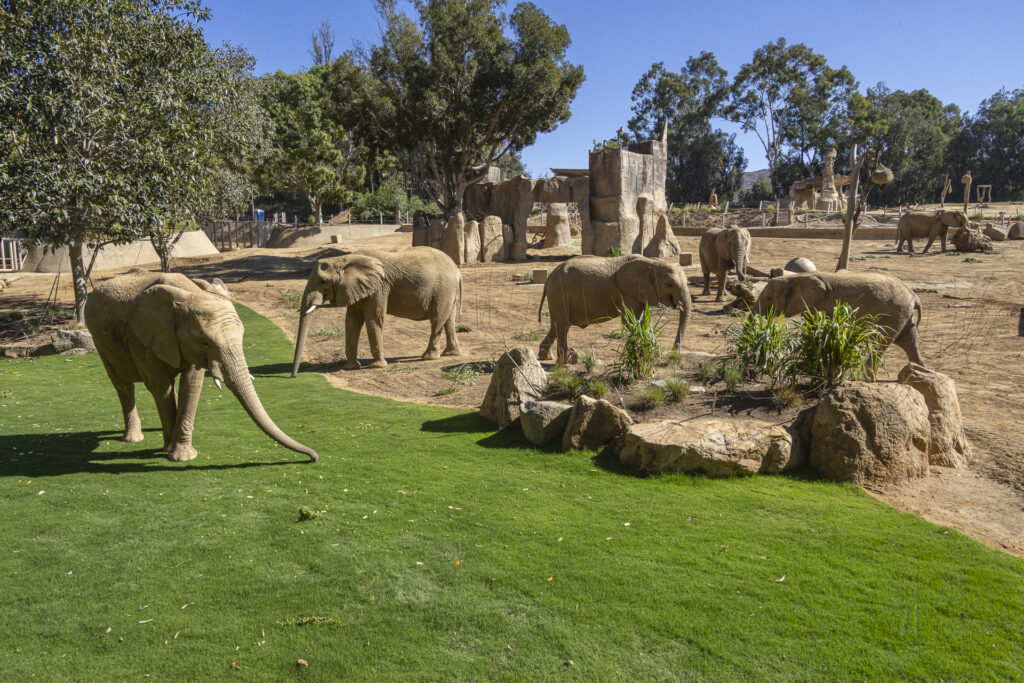
In addition, the reimaged space will offer opportunities for creating and navigating new pathways. The herd will also have larger watering holes, and guests will experience elephants swimming closer than ever before. With that, will come the chance for guests to experience the herd’s social interactions in a new light, drawing connections between their family dynamics and our own.
As our teams develop this inspiring new space, the herd has been watching, together, with curiosity. “The whole herd seems more cohesive right now. They’re together all the time,” says Lauren. Just as in their native habitats, when there’s a change in their surroundings, the herd draws near to each other—despite any recent family drama. “With all of these nuances of their social structure and dominance order that they establish and work through, whenever something happens, the herd still comes together as a family unit,” says Mindy.
Whether facing challenges or excitement, both in and around their herd, it seems that elephants understand an essential truth at their very core—that family is their greatest asset. As Swazi’s family continues to learn from and rely on each other, we can’t wait to see all that they’ll continue to teach us. With each step in their journey, we’ll be watching and listening, side by side, in humble awe.
To connect with the herd of African savanna elephants we care for at the San Diego Zoo Safari Park, visit the Elephant Viewing Patio in the heart of the Safari Park today. Discover more about the all-new Denny Sanford Elephant Valley, and explore how you can help save endangered African Savanna elephants.
As a global leader in wildlife conservation, San Diego Zoo Wildlife Alliance works to save elephants through conservation projects both at home and abroad in our Savanna Conservation Hub. Thanks to you, and innovative allies around the world, we’re creating a brighter future for these gentle giants.

